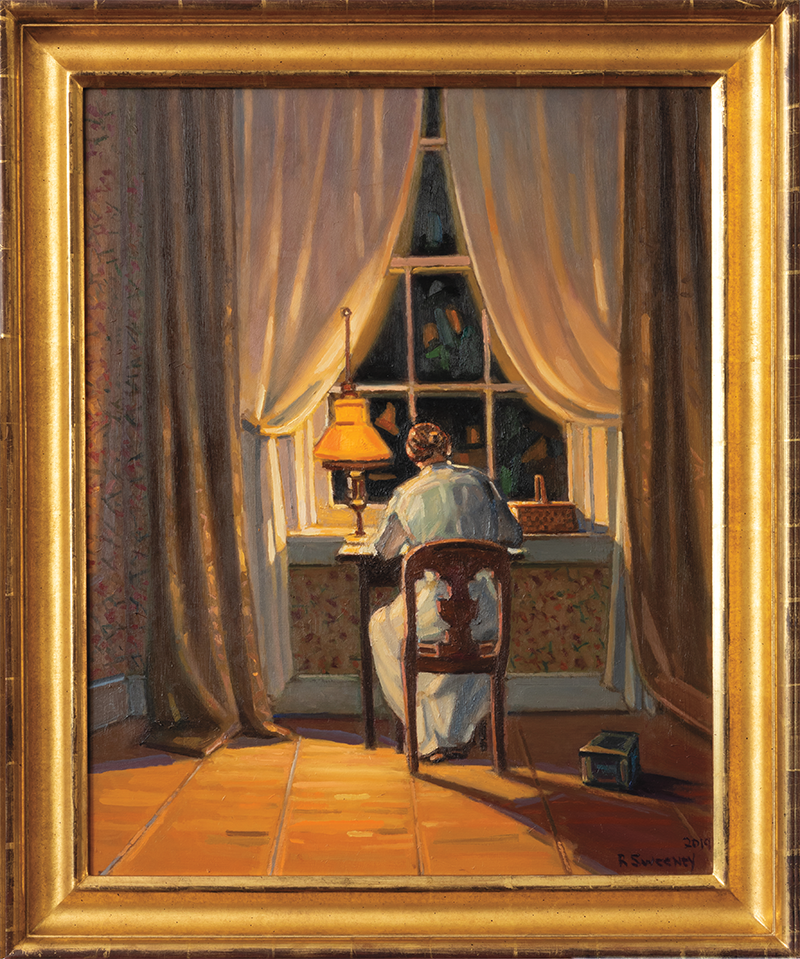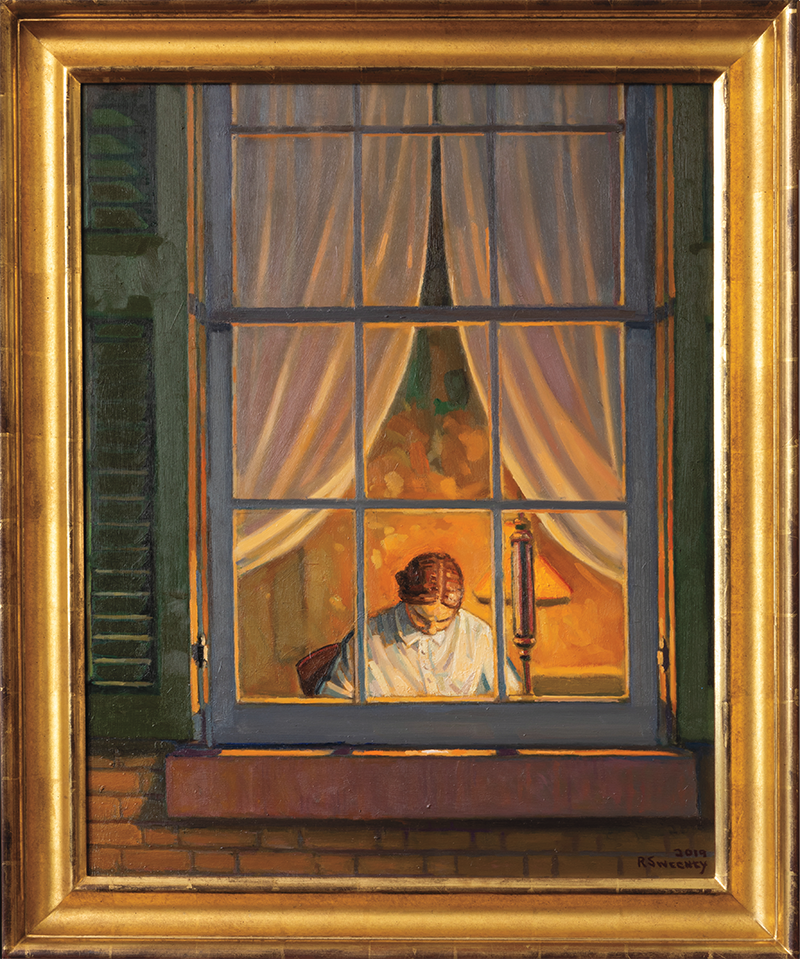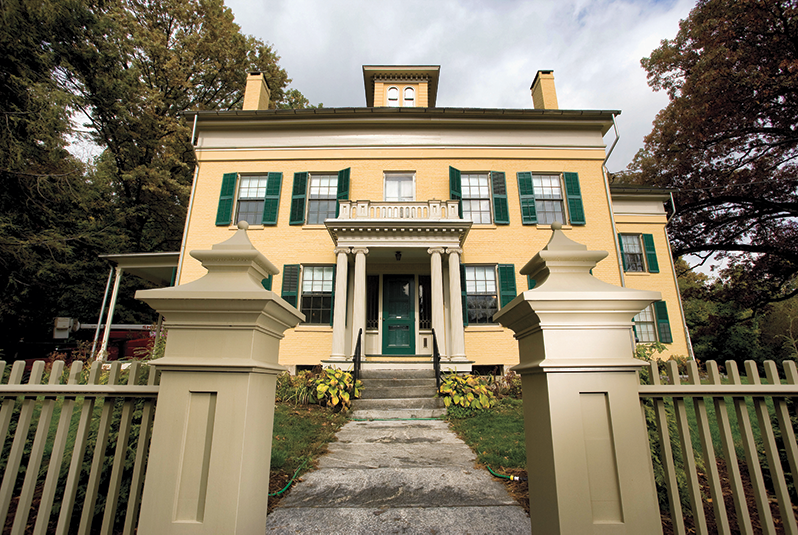A Charm invests a face
Imperfectly beheld —
The Lady dare not lift her Veil
For fear it be dispelled —
But peers beyond her mesh —
And wishes — and denies —
Lest Interview — annul a want
That Image — satisfies —

Internal Light looks in from outside the window. Evening Reflections shows the interior point of view.

How do you paint a portrait of someone who did not wish to be seen, and who has been dead for more than 130 years?
If the subject is Emily Dickinson, and you’ve been asked by Amherst to afford the poet an honor, you find a way. Robert Sweeney, the William R. Mead Professor of Art, did.
On June 21, Dickinson became the second—and third—woman to have her picture added to the gallery of College presidents, faculty and alumni in Johnson Chapel. (The first was Professor Rose Olver in 2013.)
For Cullen Murphy ’74, chairman emeritus of Amherst’s board of trustees, the new Dickinson paintings correct an omission that has nagged him since college: “The first time I came into this chapel, I had a sense of something missing. Someone missing, in particular, and that person was Emily Dickinson.”
The poet’s grandfather Samuel Fowler Dickinson helped found the College, and her father and brother each served as its treasurer. Emily was born when the College was less than a decade old. “She and Amherst College grew up together,” says Jane Wald, executive director of the Emily Dickinson Museum.
Murphy’s wish for a Dickinson portrait gained the enthusiastic approval of President Biddy Martin. In keeping with the air of mystery that surrounds the very private poet, the College commissioned not one but two paintings, neither of which is a traditional portrait.
To paint the famous recluse in her prime, the artist faces the challenge that the most recognizable and verifiable image of Dickinson was taken when she was only 16. It’s a portrait she reportedly didn’t like. Her family, arguing that the 1847 daguerreotype was a poor likeness, doctored it for editions of her work after her death, adding curls and frills. Photos alleging to show an adult Dickinson have surfaced over the years but remain a subject of debate.
Nevertheless, there’s ample material for a portrait artist to build upon: Dickinson’s poems, the original wallpaper and curtain designs of her bedroom, the white dress she wore through many of her years of seclusion, a lock of her auburn hair.
Murphy says he and Sweeney “began to wonder if there might be an oblique way of creating a portrait”—something that did not pretend “to know more than we can, and yet somehow captured as much of what we can know as possible.”
This resulted in two portraits of approximately the same scene: Dickinson as seen at her table from behind, inside her bedroom; and Dickinson as seen from outside the bedroom window. “I love the way Bob Sweeney has preserved a sense of solitude and self-reliance by not revealing her face to us,” says Wald.
For Sweeney, Dickinson’s ability to pack meaning into a simple detail made a difference: “What I like about her poetry are the pictures she paints in little pieces, right in those poems. The funny little reference that doesn’t mean anything at first, and then it kind of comes back around and you say, ‘Ah, that makes sense.’”
